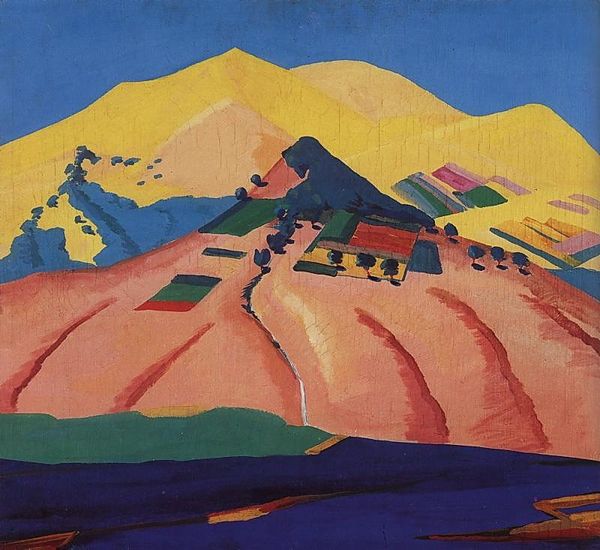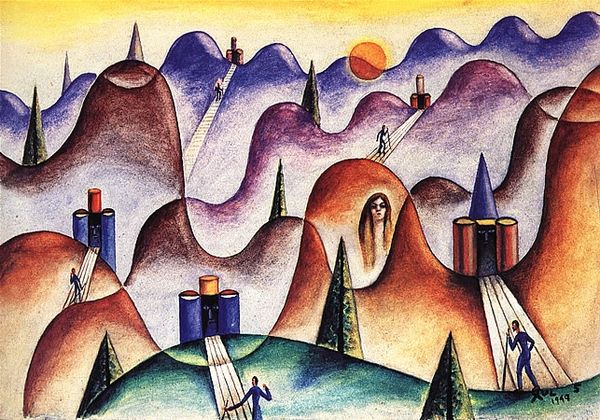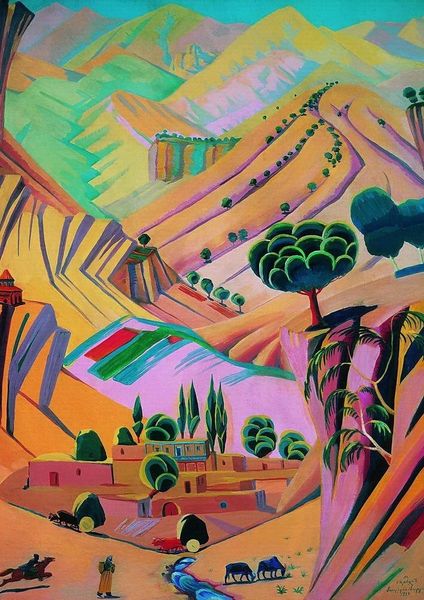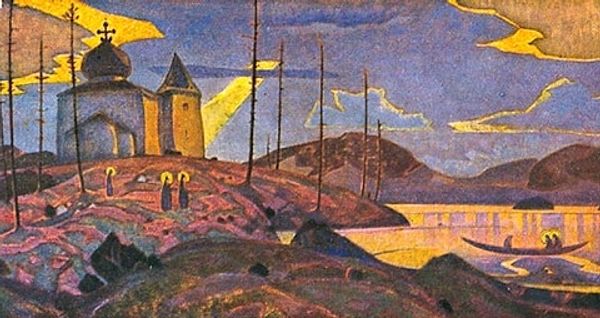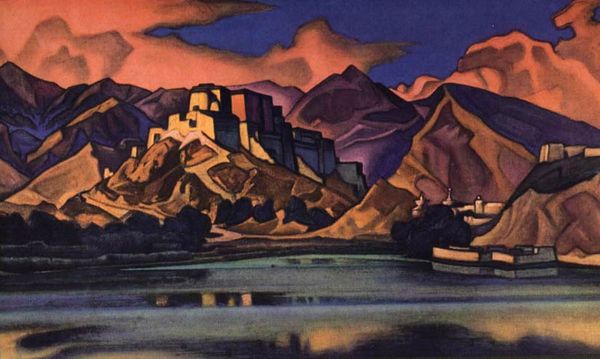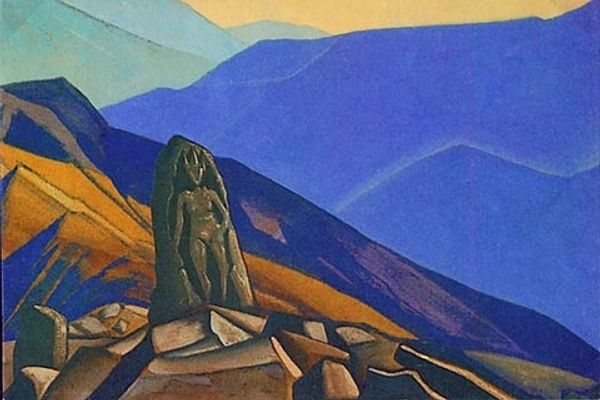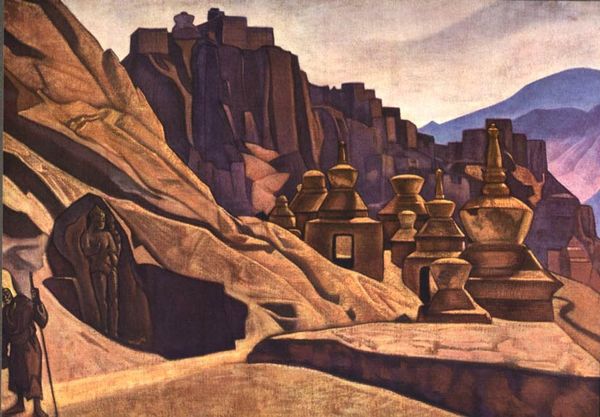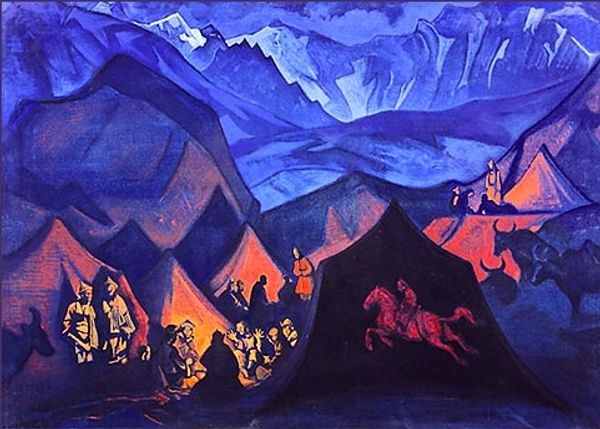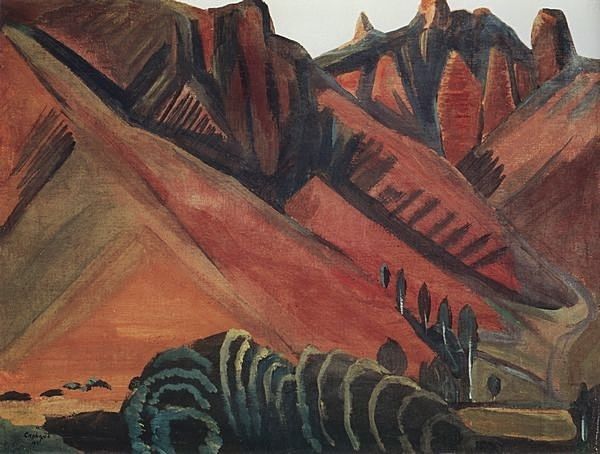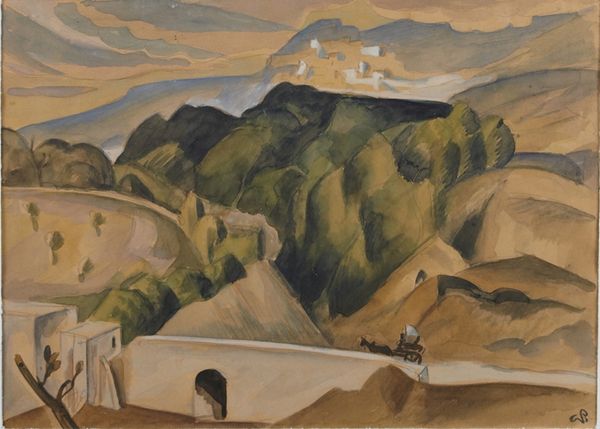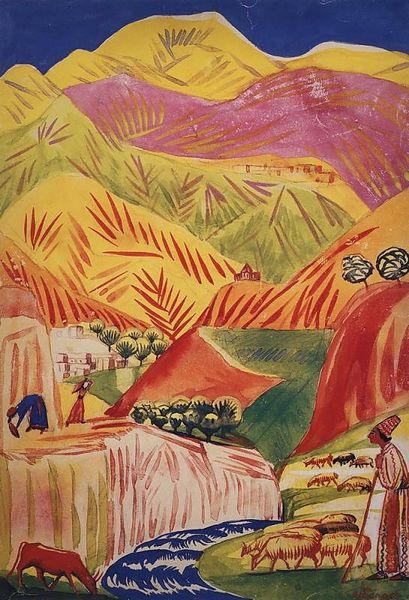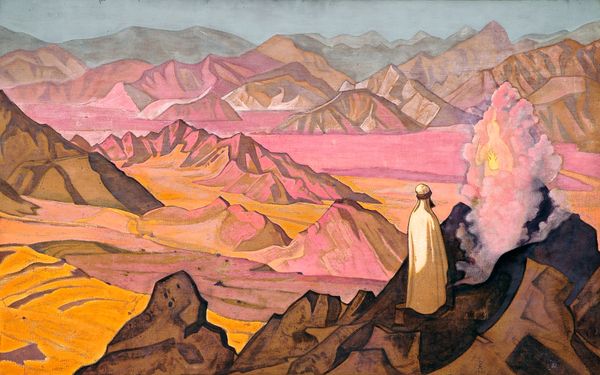
Copyright: Public domain US
Curator: This is "The curtain of the State Drama Theater of Armenia" painted by Martiros Sarian in 1923. It’s a vibrant piece, incorporating tempera and oil paint, even reminiscent of fresco techniques in its large scale. Editor: The colors are extraordinary; it almost feels like looking at a dream. A very tactile one at that. The materiality, the thickness of the paint… I wonder about the weaving of the canvas itself. It feels rough, perhaps even repurposed. Curator: Sarian was deeply invested in portraying Armenia’s cultural identity and promoting cultural institutions in Armenia. This curtain becomes symbolic of a gateway to national stories being told on the stage. Imagine the anticipation it would generate! Editor: It’s fascinating how the stylized landscape pushes against any true sense of depth. The geometric forms of the mountains, the shapes of the trees, it's all very flattened, yet it feels grand because of its sheer size for a stage. Were locally sourced pigments employed, I wonder? Curator: Very likely. Sarian was actively participating in nation-building efforts after the establishment of the Armenian Soviet Socialist Republic. His artistic vision significantly shaped Armenian visual culture. The imagery borrows from a pre-existing artistic visual language of Armenian culture and history, reimagined for a new sociopolitical context. Editor: This melding of art, craft and labor really makes you consider how audiences would experience performance back then. There is such attention to form but what does the canvas making tell about labor involved and accessible at the time? Did people discuss who makes theatre versus what ends up on stage? Curator: The interplay between folk traditions and modernism is so evident here. You have a landscape depicted with an almost mythical quality but composed in a distinctly modernist manner. This theater piece really encapsulated an emerging modern national identity. Editor: And considering the history of the theater itself adds a fascinating layer. It served not just as a cultural center, but perhaps as a visual statement of Armenian artistic capability in the period. Curator: Absolutely, thinking about the curtain in the broader context, it's more than decoration. It represented aspirations for a new era, the power of art to create social and political meanings in national projects. Editor: Agreed. When considering it not only for its image, but for the process and resources to construct, this art piece brings a much richer significance in imagining art's influence on the country's artistic production today.
Comments
No comments
Be the first to comment and join the conversation on the ultimate creative platform.
